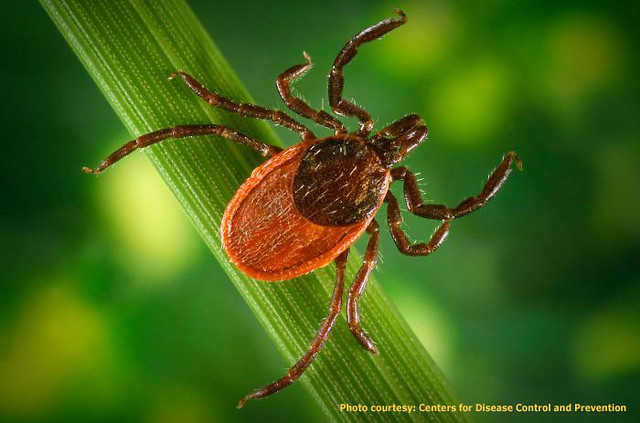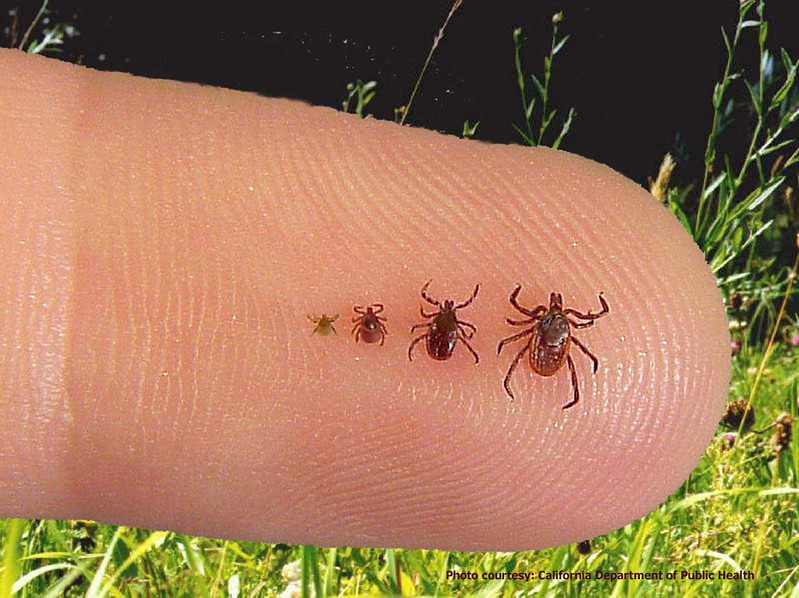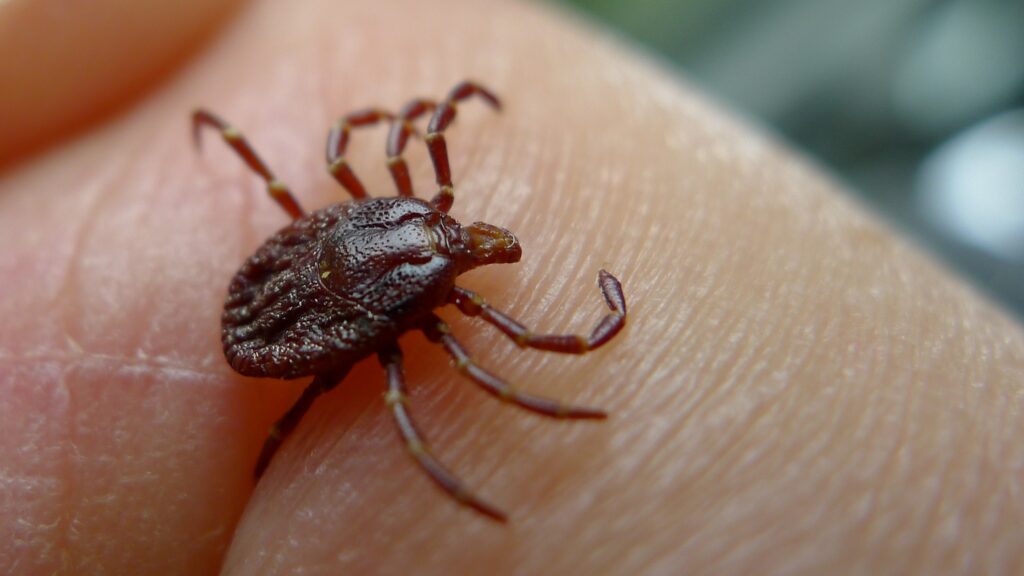Full Guide On How To Spot, Treat And Get Rid Of Ticks In Your House
Ticks are parasitic spiders that get their food from the blood of mammals, birds, reptiles, and frogs, among other animals. Trees and bushes are good places for ticks to hang out, and they like to stick themselves to people and animals that brush against them.
What is a Nymph?

Insect pests go through either easy or complex metamorphosis to finish their life cycle. In complex transformation, an insect changes from an egg to a larva (also called a caterpillar) to a pupa and finally to an adult.
Ticks change into different species. They are called “larvae” when they hatch, but they don’t look like worms. They look like little ticks. They are about the size of a poppy seed and have six legs. They quickly try to connect themselves to any living thing that will give them blood. It takes them off and a change to turn into a nymph with eight legs once they are full. Nymphs are a bit smaller than adult ticks, but they still look like ticks and can spread disease.
WARNING
Lyme disease, Rocky Mountain spotted fever, and tularemia are just some of the dangerous diseases that ticks can spread. A lot of solutions for ticks use pesticides, which can hurt people and pets if they are not used correctly. If you’ve had problems with ticks inside your home on more than one occasion, take steps to make it less appealing to ticks and think about calling a professional pest control service for long-term help.
How do ticks look?
The tick is a small, spider-like insect that lives in woods and fields. They are most common in the spring and summer, but they are still active in the fall. These bugs don’t fly and usually live on animals, but they can also stick to people.
Ticks are brown or black, and they have little bumps all over their bodies. They have small heads with mouths that are made to cut skin so they can feed on blood. Their legs are long and thin. The very small caterpillars have only six legs, while the adults and nymphs have eight. Once they’ve eaten blood, ticks can get “engorged,” which means they get bigger. During this time, they can be as big as a pea.
If you think you found a tick inside, be careful and make sure you’re not dealing with bed bugs or carpet beetles. If you find a tick on your body or on your pet, you should see a doctor to get advice on how to get rid of it and what treatments are available.
Some types of ticks can get inside, but most people think of ticks as being outside animals. Some of them spread disease, but not all of them do. Among these ticks are:
The deer tick is the most famous tick that spreads Lyme disease. It is very small and hard to spot. The name “deer tick” is a bit out of date, though, since this tick is not usually found on deer. Rats and mice are what it is.
The American Dog Tick: This tick can bring Lyme disease and Rocky Mountain spotted fever inside on pets or clothes.
The Brown Dog Tick: This tick is a common home pest that wants to stay for a long time. It is not known to spread disease, but if it is allowed to thrive indoors, it can give pets anemia.
Tip
Ticks usually come inside on pets and clothes that were worn outside. If your dog or family members have been running through the woods or tall grass, or if you live in a place where ticks are a big problem, check them (and you!) when they get back inside after being outside.

6 Ways to Get Rid of Ticks Naturally
Getting rid of ticks isn’t really the point of tick control. Ticks will always be around if you live in an area where they are common. It’s important to keep them out of your home and away from your pets and family.
Several old wives’ tales say that certain things can get rid of ticks or keep them from biting. However, not all of these ideas are based on science. Some of them, like setting fire to the tick with a hot match, can even hurt the bug more than help it.
When getting rid of pests, use easy, common sense methods. It’s probably too good to be true if a treatment method seems dangerous or too hard to understand.
Know How to Inspect for Ticks
The CDC says that ticks need to be stuck for 36 to 48 hours before they can do any harm. When you or your pets come inside after being outside, especially in the spring and summer, make sure to carefully check everyone for ticks. Check these parts of your body:
- Around the ears and in the hair
- In between the legs
- Knee backs
- Below the armpits
- Around the waist
- Inside the bellybutton
Also, don’t forget to check your gear. Ticks can get inside on things like coats, bags, and tents, so make sure you check those things too.
Tip
Ticks that are sick with Lyme disease do not spread the disease for the first 24 hours after feeding. Also, taking a shower within two hours of coming inside can help lower your risk of getting Lyme disease and other diseases spread by ticks. It can also get rid of ticks that haven’t had a chance to connect yet. When you shower, you can check your whole body for ticks, so don’t forget to do that after being outside!
Check your pets for ticks
Ticks often come inside with animals. Ticks, like the brown dog tick, are happy to live in your home where they can feed on your pets and have a lot of babies. These things can make your pets get anemia.
Ticks are very small and may be hard to see at first on your pet. So they can feed without being seen, they burrow into an animal’s fur and connect themselves. The tick is probably full of blood by the time you notice it. Don’t wait until you see a tick that is full of blood! Take tick and flea medicine for your dogs and make sure they are clean when they come inside.
Get rid of ticks.
Different types of sprays and repellents are available to get rid of ticks, such as over-the-counter goods like DEET and homemade ones.
It has been shown that the following essential oils can help keep ticks away:
- Lemon oil
- Eucalyptus oil
If you want to make your own tick repellent, you should mix one or more oils with water, vinegar, and witch hazel in some way. But do your study first! Essential oils can still be dangerous if they are not used correctly, so find a method that you can trust and follow it carefully.
Wear Proper Clothing
Remember to wear the right clothes if you’re going to be outside in wooded places where ticks might be present. Before you go outside, you might also want to treat your clothes with something that keeps ticks and other bugs away.
Cover your skin, wear shoes with closed toes and tall socks, and wear long sleeves and pants made of durable fabric. Also, try to avoid going through areas with heavy brush as much as possible.
Tip
Outside, wear light clothes. Because ticks are dark, it is much easier to see them on the outside of your clothes.

Use Your Dryer to Kill Ticks
When you get back inside from being outside, put everything in the dryer on high before you wash it. That’s right, dry first, then wash and dry again. Even though it might make sense to wash the clothes first, the ticks might not be killed by the heat of the cleaner, and you don’t want to leave them there.
Dry your clothes. It’s easy for ticks to dry out. To get rid of ticks that are still on your clothes, take them off and dry them at high heat for at least 10 minutes.
Address Conducive Conditions
In pest control, a “conducive condition” is any factor in the surroundings that makes a pest problem worse. Some of these elements are food sources, safe places to hide, and others.
When dealing with ticks inside, there are a few things that should be taken into account first:
What ticks eat: Ticks eat blood. Treat your pets for ticks and check your pets and family members after being outside to get rid of their food sources.
Areas where ticks can hide: Ticks live outside, but if you want to keep them away from your home, cut back any brush or greenery that’s close to buildings or other structures inside.
How to Tell If You Have Ticks in Your Home
Because ticks are so small, it can be hard to find them inside until they have eaten blood or become a regular problem.
In the woods, brush, and tall grass, ticks like to hide. They will group together or hang out alone until an animal picks them up without meaning to.
They won’t go away for good, no matter how much you want them to. Chemical sprays may be what you want to use, but too much of them is bad for the earth and your health, and they won’t get rid of ticks for good.
It is very important to know how to check for ticks and to do it regularly if you live in an area where ticks are known to be outside or have been a problem inside in the past.

What Causes Ticks?
Ticks are parasitic arachnids that feed on the blood of animals, such as mammals, snakes, and birds. They are related to spiders and mites. In the past few years, their numbers have been going up, which is scary and means people need to be ready to take steps to stay away from them.
You can find ticks everywhere. While spring and summer are their busiest times, you can still find them in some places as late as October. They like being outside, but there are several ways for them to get inside. Here are some of them:
Hitching a ride on pets
Hiding in clothing that has been worn outdoors
How to Stay Away from Ticks
There are some important things you need to do to keep ticks out of your home:
- You should give your pets a good tick medicine.
- When you’re outside, use tick repellent. Know where ticks might be hidden and stay away from those spots.
- Before going inside, make sure you check your family and pets carefully, especially if you’re in the woods or near thick brush.
- If you want to keep ticks away from your clothes, wash them the right way and dry them in a high-heat heater.
- Make sure the yard next to your house is well-kept and free of weeds.
These steps may seem like a lot of work, but they will help keep you, your family, and your pets safe from the health risks that can come with having ticks.
FAQ
How long do ticks stay alive?
Some ticks can live for up to three years before they die. Ticks can be harmful to your health during this time, depending on the type of tick.
What does Lyme sickness mean?
Lyme disease is caused by a germ that ticks carry. This sickness can spread to the heart, nervous system, and joints, and it feels like the flu and gives you rashes.
What ticks cause Lyme disease?
Toxoplasmosis is spread by Ixodes ticks, which are also known as black-legged ticks and deer ticks. You can find these ticks in some parts of North America.5
Why are tick populations going up?
Tick numbers are growing around the world because of warmer weather, habitat loss, and the trade of animals between countries.



